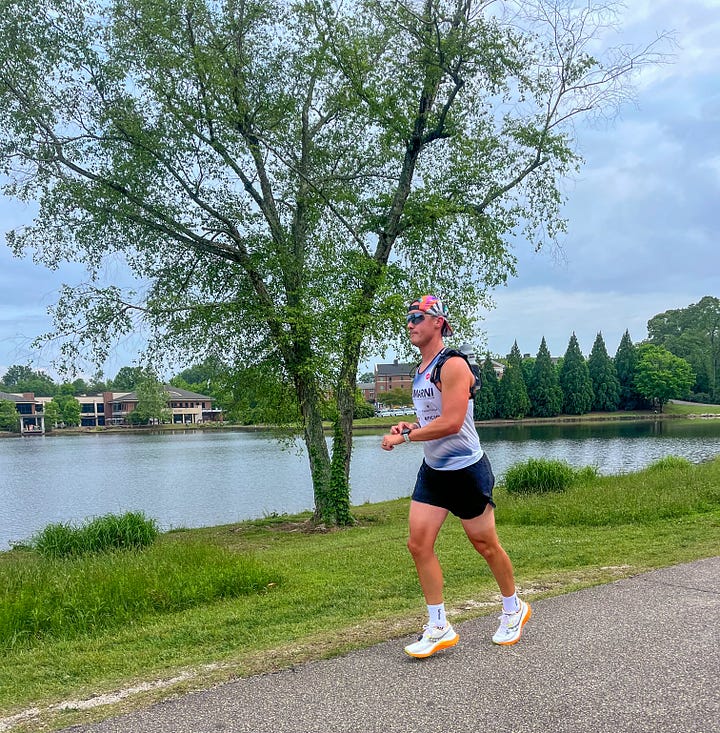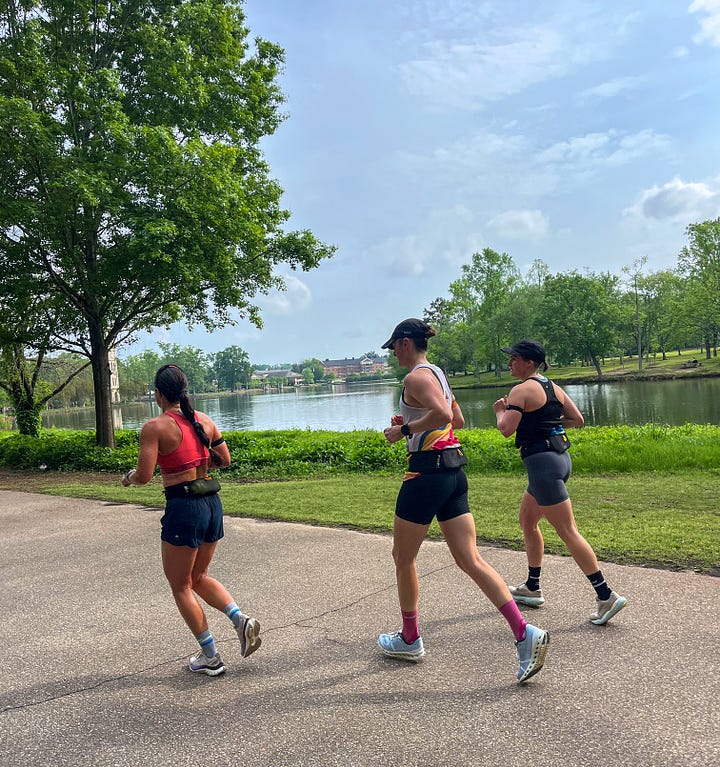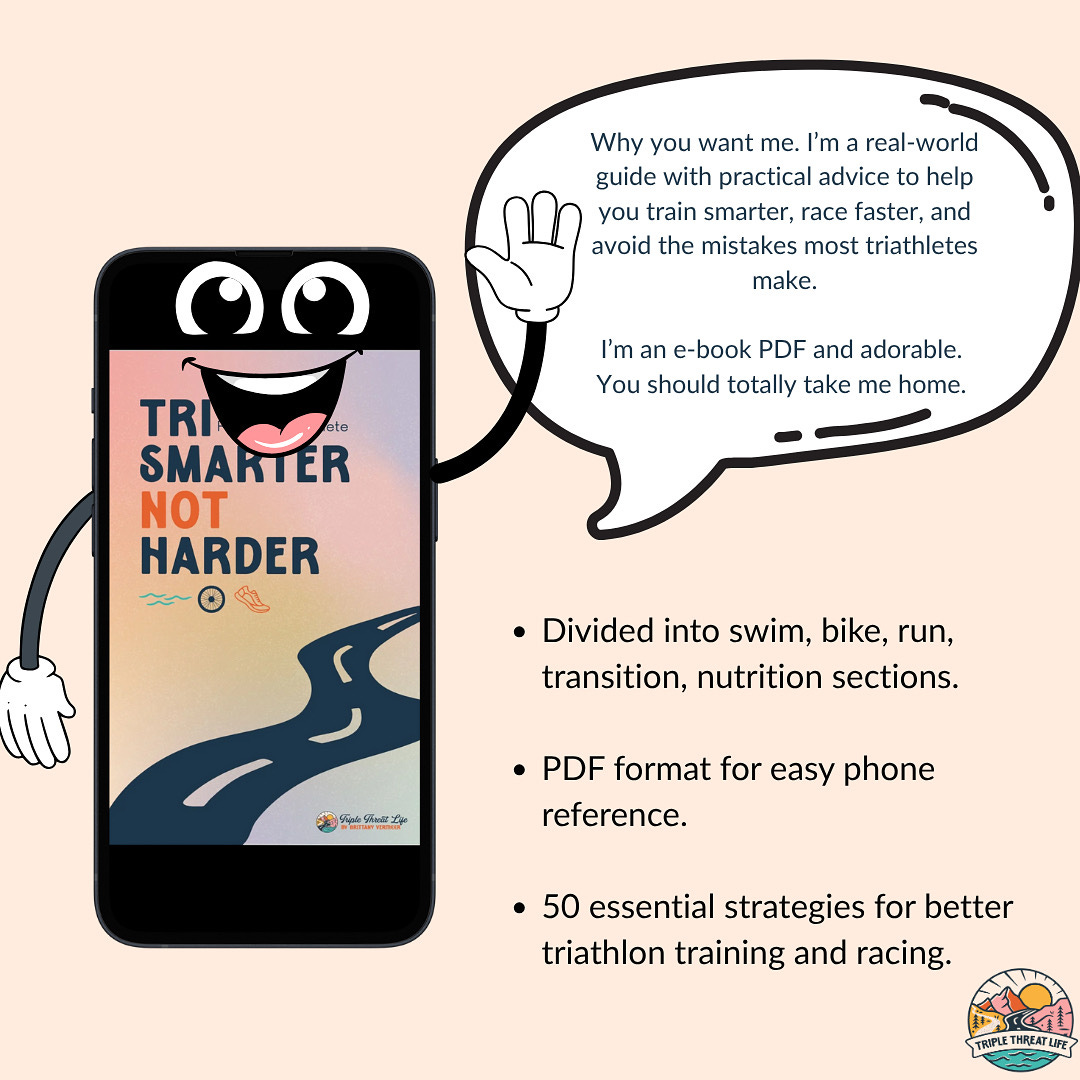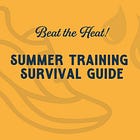Long Ride Logistics: Set Yourself Up for Success With This Prep Plan
Everything you need to prep for a 3+ hour bike ride
Triple Threat Life is an email newsletter with practical triathlon tips and mindset techniques to help everyday athletes succeed. Some installments are free. Some benefits are for paid subscribers only. Sign up here.
Over the weekend, we had a 3-hour bike ride, followed by a 30-minute run off the bike. Essentially, we would be working out for 3:30.
But in reality, the time commitment is much more than that.
You don’t just grab your bike, helmet, and head out the door for a session like this. It takes planning and preparation to ensure you’re set up for success.
I can’t tell you the number of times that a friend has met us for a bike ride and left his cycling shoes at home, forgot his nutrition, or didn’t bring a flat kit.
That brings me to one of my favorite quotes:
“By failing to prepare, you are preparing to fail”- Benjamin Franklin
The training is hard enough, so do yourself a favor and prepare the right way for these big workouts.
Remember, Tri Smarter, Not Harder! (Yes, that’s the title of the new e-book and you should totally download it here).
I think I probably take this for granted, because we’ve been doing it for a while now and have our system down pat. So I wanted to share our process in the hopes it gives you a few insights, tips, and methods you can replicate at home.
🚴♀️ Paid subscribers get access to a bonus video: What’s in My Bike Bag? A Peek at Our Long Ride Essentials
Why prep work before long sessions is important
I get it. The last thing you want to do on a Friday night after work is start getting ready for your long bike ride on Saturday morning. But if you take just a few minutes to organize gear, charge devices, and prepare nutrition, you can avoid big headaches and mistakes that could potentially derail your training.
The goal with prep work is to save time, minimize stress, and maximize performance by being better prepared.
Now your “long ride” might be a different length than ours, especially if you’re getting ready for a sprint triathlon, or an Ironman. But it doesn’t really matter if your long ride is 2 hours or 5 hours, the prep process is the same.
Also, when talking about timing of these long workouts, we typically do our long bike ride on Saturday and long run on Sunday. This is a format most triathletes follow simply because there’s more time available on the weekends. But if your schedule is different, just modify to suit your needs. For example, I know of someone who does their long workouts on Monday and Tuesday, because they work during the week.
Side note: This is very important to consider if you’re planning to sign up for a 70.3 or Ironman. Most athletes just sign up for a race and don’t consider the time commitment needed to train properly and how they will fit that into their already busy lives. This can lead to unnecessary stress, relationship strain, and disappointing results.
For example, if you’re training for a 70.3, you’ll need to commit to several weekends of 3-hour bike rides, plus runs off the bike. But it’s not just 3 hours and 30 minutes of training. You also have to consider prep time, drive time to a ride location, drive time home, and time to shower and refuel.
So now you’re looking at a 4-5 hour time commitment on a Saturday morning, which does affect your ability to do household chores, attend kids’ games and practices, and spend time with family. It’s 100% doable, but you need to know what you’re signing up for and have excellent time management and prep skills.
So let’s get started!
Day Before Prep

If we have a long bike ride on Saturday, the first thing we do is look at our workouts so we can plan a route. The routes we do vary, because Matt and I hardly ever have the same workout. Also, we ride at different paces, so we might not be able to do a single, large loop, because we’d be spending too much time separated on the roads, and that’s not very safe with car traffic.
For example, on Saturday, I had 3 x 15 minutes at half Ironman effort with 8 minutes rest in between. That’s a 69-minute block of focused work, so we needed to plan a route with an out-and-back or long stretch where I could do my efforts and Matt could double back to meet up with me during my rest periods so we could ride together.
We also check the weather and determine what time we want to start. This is especially important during the heat of the summer.
Then, it’s time to pack!
First, I plug in our bike computers and radars. We both use Garmin Varia Radar, and if you don't have one, you need to buy it immediately. It’s a taillight that connects to your bike computer and notifies you with an audible alert for car traffic coming from behind, up to 153 yards away. We don’t ride without it.
If I haven’t plugged in our Di2 chargers in a few weeks, I do that too. I learned this the hard way… You don’t want to get out on a long bike ride and have your shifting die. That puts a stop to the fun real quick.
Then, I organize our bike bags. We each have a small duffel bag that contains all our cycling gear so we can grab and go in the morning. This keeps everything organized and ensures we don’t forget an essential piece of equipment.
Here’s what we keep in our bike bags.
Cycling shoes
Helmet
Cycling gloves
Sunglasses
Heart rate strap
Extra hair ties
Chamois cream and sunscreen packets
Then, if we have a run off the bike, that calls for additional equipment.
Running shoes
Running shorts (We change out of our cycling bibs to run)
Run belt to carry hydration
Run bottle
Bag of ice
Cooling neck towel
Next, I take my bike off the trainer. During the week, we ride on our Wahoo Kickr connected to Zwift, and it stays set up all week.
Our flat kits stay on our bikes, so they’re always ready to go. If you don’t have a flat kit, here’s what you need to carry.
Spare tube that fits your tires
Co2 cartridge (I always carry 2)
Co2 cartridge adapter
Pair of tire levers
Any valve adapters if needed for deep race wheels
The last step is to set out our nutrition. For a 3-hour ride, I have one bottle an hour (Matt’s are 27 oz., mine are 32 oz.) and we bring 1 gel per hour. Because it’s so hot here in Florida, we bring an extra, small bottle that’s filled with ice water that we can pour on ourselves during the ride to help stay cool.
We also bring a change of clothes. Never drive home in your wet cycling gear. This is a good way to get saddle sores. Warm and wet promotes bacteria growth and it’s just gross. You want to change into dry clothes as soon as possible, and you can take a shower when you get home. (I have an article coming out about this in Triathlete Magazine soon!)
Take home Tri Smarter, Not Harder by clicking here.
Morning of the Ride Prep
On Saturday morning, we wake up, drink a large glass of water, and start getting ready. Our pre-workout breakfast includes a bagel with butter and a Gatorade.
Then, we always have some type of pre-workout activation focusing on glutes, hips, or mobility ranging from 15-20-minutes.
After we get dressed, it’s time to make our nutrition bottles that we set out the night before. Sometimes, Matt will put these in the freezer while we’re getting ready so they stay cold. (Just don’t forget them…) This past weekend, he put them in a cooler in the back of the truck so they stayed cold on the way to the ride, and I had ice I could use for my run!
The last thing to do is pump up bike tires, load the bikes onto the truck, and head off for the ride.
If I have a particularly complex workout, I use an index card or small sticky note and write it down. Then, I stick that in my top tube for easy reference.
Post-Ride fun


Once we’re done with the ride. It’s time to run off the bike. We change out of cycling clothes into run shorts. Then, we lock our bikes onto the bike rack on the truck. I put on my run band and stick a small flask of nutrition inside. I put ice in my sports bra and wrap a cooling towel around my neck.
During the summer in Florida, it can easily be 90s-100s when we start running, so anything we can do to stay cool is a good idea. This also plays a role in selecting a ride location, because we want somewhere to run that has shade.
Once the workout is complete, we change into dry clothes, make a protein shake, and head home! It’s very important to hydrate and re-fuel after long workouts, so I will typically eat something like eggs, waffles, and orange juice with some added salt. Then, I try to drink as much of my 50 oz. bottle of water as I can throughout the rest of the day.
This is important because I’m trying to recover from the ride, and also set myself up well for my long run the next day. We also make an effort to prioritize carbs throughout the day with foods like pretzels, pasta, bread, yogurt with berries, graham crackers, and rice to replace the glycogen lost during the ride. Trying to eat more carbs and less fat has made a BIG difference in how I feel during my Sunday long runs.
We follow this process pretty much every weekend, and it’s second nature at this point. I hope it gives you a few good ideas for ways you can prepare ahead of time to reduce stress and maximize the effectiveness of your long bike rides!
Now, paid subscribers get access to a video where I show you exactly what’s inside our bike bags, from gear and tech to nutrition and more.
Scroll below to watch: 🚴♀️ What’s in My Bike Bag? A Peek at Our Long Ride Essentials
Keep reading with a 7-day free trial
Subscribe to Triple Threat Life to keep reading this post and get 7 days of free access to the full post archives.











